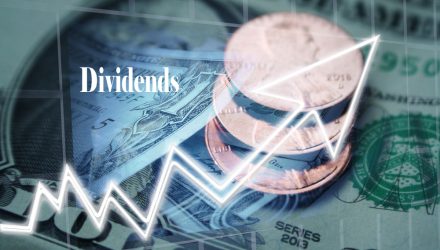Safe haven government bond yields have obviously forced fixed income investors to look elsewhere for higher yields. One example is dividends. Even companies started to cut back on those amid the pandemic, but investors can still get quality dividend payouts in these uncertain markets.
“For lovers of dividends, the end of the first quarter and the start of the second quarter looked pretty dire,” a CNBC article said. “Forty-two companies in the S&P 500 — nearly 10% — suspended their dividends, and 25 reduced them, in some cases considerably.”
“That was unprecedented,” said Howard Silverblatt of S&P Dow Jones Indices. “No company suspended their dividend in 2018 or 2019.”
Nonetheless, one fund to get exposure to quality dividends is the Global X S&P 500 Quality Dividend ETF (QDIV). The fund seeks to provide investment results that correspond generally to the price and yield performance, before fees and expenses, of the S&P 500® Quality High Dividend Index.
The fund invests at least 80% of its total assets in the securities of the underlying index. The underlying index is designed to provide exposure to U.S. equity securities included in the S&P 500® Index that exhibit high quality and dividend yield characteristics, as determined by Standard & Poor’s Financial Services LLC, the provider of the underlying index.
QDIV gives investors:
- Focus on Quality: QDIV invests in companies that score in the top 200 of the S&P 500 based on a variety of quality metrics including return-on-equity, accruals, and financial leverage.
- High Income Potential: To qualify for QDIV, a company must score in the top 200 of the S&P 500 in dividend yield.
- Monthly Distributions: QDIV makes distributions on a monthly basis.
Other Dividend ETF Options
Other dividend ETF options include the ProShares S&P 500 Aristocrats ETF (BATS: NOBL), which tracks the S&P 500 Dividend Aristocrats Index. The fund targets the best of the best in dividend growth, selecting components that have increased their dividends for at least 25 consecutive years. As a result of this high-quality filter, investors are left with a portfolio of first-rate dividend payers compared to say high-yield focused funds that feature companies in precarious financial positions as a result of over-leveraging.
ProShares also offers dividend growth ETFs that focus on other market segments, like the ProShares Russell 2000 Dividend Growers ETF (BATS: SMDV) and the ProShares S&P MidCap 400 Dividend Aristocrats ETF (BATS: REGL) for those seeking quality dividend growers in the small- and mid-cap categories. REGL tracks a Dividend Aristocrats Index, which only requires 15 consecutive years of increased dividends for inclusion.
On the other hand, SMDV, which tracks the Russell 2000, the benchmark U.S. small-cap index, uses the Russell 2000 Dividend Growth Index. This index includes small-cap firms with dividend increase streaks of at least a decade.
For more news and information, visit the Thematic Investing Channel.

